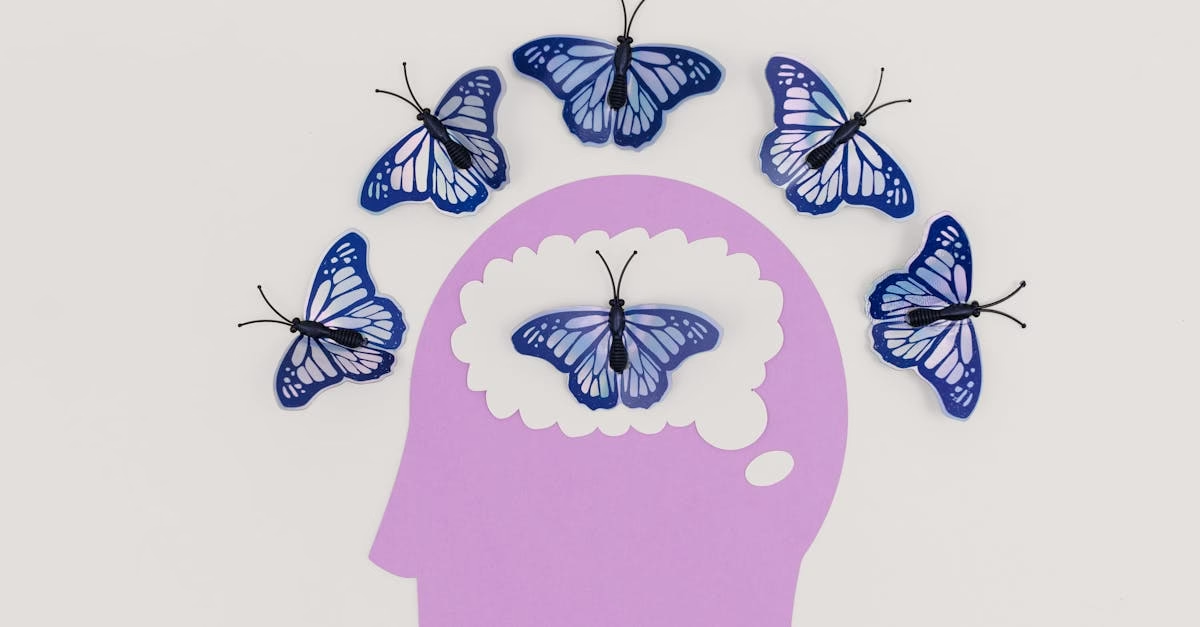Ever wondered how AI agents can think, plan, or even adapt like humans? Let’s explore the brainy side of AI and see how machines are learning to act smart—just like us!
AI agents are more than just software that follows rules. The new wave of AI—called Agentic AI—is designed to act with purpose, adapt to changes, learn from experience, and work towards goals. These agents are inspired by how humans think, solve problems, and make decisions. Scientists are now building AI systems with “cognitive capabilities”—the mental powers that allow humans to perceive, reason, remember, and act. These powers come from how our brain works. AI developers are now using these ideas from neuroscience and psychology to make machines that don’t just process data—but truly “understand” and act. In this lesson, we’ll look at 7 key cognitive abilities that make AI agents truly intelligent. You’ll learn what these abilities are, how they exist in the human brain, why they matter, and how AI can be built to use them. Let’s discover how AI is learning to think!
1. ✅Cognitive Capability: Perception
What is Perception in AI Agents?
Perception is how an AI agent sees, hears, or senses its environment. Just like humans use eyes to see and ears to hear, AI agents use sensors and tools to collect data. For example, cameras help AI see, and microphones help it hear. This information helps agents understand their surroundings and make smart decisions. AI perception includes visual recognition (like spotting objects), audio understanding (like speech recognition), and even environmental sensing (like detecting temperature, movement, or location). Without perception, an agent would be “blind” or “deaf”—unable to respond to what’s happening around it.
- Helps AI recognize faces, traffic signs, voices, and gestures
- Allows real-time decision-making in changing environments
- Enables smart interaction with humans and surroundings
How the Human Brain Has This Property (Neuroscience View)
In humans, perception starts with our sensory organs. Our eyes, ears, skin, nose, and tongue send signals to the brain through nerves. The brain’s visual cortex processes what we see, while the auditory cortex handles what we hear. Our brain combines signals from all senses to build a clear picture of the world. This helps us respond to danger, enjoy music, or find food. The brain filters out noise and focuses on what matters most—like recognizing a friend’s face in a crowd.
- Sensory organs (eyes, ears, etc.) collect data and send signals
- Visual and auditory cortex in the brain process the input
- Brain filters and integrates sensory data for decision-making
Why This Capability Is Useful
Perception is the foundation of all smart behavior. Without it, agents wouldn’t know what’s happening. It helps agents understand problems, detect changes, and avoid danger. It also lets AI systems work better with humans—for example, by recognizing voices or gestures. Smart cars use perception to avoid accidents, while robots use it to pick up objects.
- Enables agents to “sense” their surroundings
- Improves safety, accuracy, and efficiency
- Supports human-AI interaction through voice, vision, and touch
How AI Agents Can Have This Capability (Tools & Ecosystem)
AI agents use various tools for perception. Cameras, LiDAR, microphones, and sensors collect data. Machine learning models like computer vision (CNNs), audio processing (RNNs, transformers), and sensor fusion help analyze it. Frameworks like OpenCV, PyTorch, and tools like YOLO (for object detection) and Whisper (for speech recognition) are popular. Perception is often integrated into robotics platforms like ROS or smart assistants like Alexa.
- Use hardware sensors (camera, mic, LiDAR) for input
- Use AI models (CNNs, audio transformers) to analyze sensory data
- Ecosystems: ROS (robotics), OpenCV (vision), Whisper (speech), etc.
2. ✅Cognitive Capability: Attention
What is Attention in AI Agents?
Attention in AI means focusing on the most important information and ignoring the rest. Just like you can focus on your teacher’s voice in a noisy classroom, AI agents can be trained to focus on useful parts of data. For example, when reading a paragraph, an AI model doesn’t look at every word equally. Instead, it focuses more on the important words that help understand the meaning. This saves time and makes the agent smarter. In language models like ChatGPT, attention helps it understand which parts of a sentence are related. In robots, attention helps focus on objects that are moving or important for a task.
- Filters out less useful information and focuses on key parts
- Improves understanding in language, vision, and planning tasks
- Makes processing faster and more efficient by ignoring noise
How the Human Brain Has Attention (Neuroscience View)
In humans, attention is controlled mainly by the prefrontal cortex and thalamus in the brain. The prefrontal cortex helps us choose what to focus on, like a teacher asking you to look at the board. The thalamus acts like a gate—it filters signals from our senses and only sends important ones to the brain. For example, when you’re reading a book, your brain blocks out background noise. The brain also uses something called “selective attention” to focus on one thing while ignoring others. This ability helps you concentrate, learn better, and stay alert to danger.
- Prefrontal cortex controls conscious focus and task switching
- Thalamus filters sensory input to avoid overload
- Selective attention helps block distractions like noise or motion
Why Attention is Useful for AI Agents
Attention is one of the most important cognitive powers because it helps AI agents stay focused on the task. Without attention, an AI model would try to process everything equally—even things that don’t matter. For example, in a chatbot, attention helps it focus on important keywords to give the right answer. In a robot, attention helps it watch the object it needs to pick up, not everything around it. This makes AI agents smarter, faster, and better at solving problems.
- Improves accuracy by focusing only on useful information
- Speeds up decision-making and reduces processing time
- Helps in navigation, speech, vision, and multitasking
How AI Agents Use Attention (Tools & Ecosystem)
AI agents use something called the “attention mechanism” to copy this human skill. It was first used in language models like Transformers (the technology behind ChatGPT). These models look at each word and decide which other words are important. This helps with translation, summarization, and question-answering. Tools like BERT, GPT, and T5 use attention to find meaning in sentences. Visual attention is used in AI that processes images or video—for example, a camera focusing on a person’s face. AI agents in games, drones, and robots also use attention to track targets or monitor goals.
- Transformers use attention to link related words in a sentence
- Visual attention models help robots focus on key objects
- Tools: Hugging Face Transformers, OpenAI GPT, Vision Transformers (ViT)
3. ✅Cognitive Capability: Memory
What is Memory in AI Agents?
Memory in AI agents means the ability to store, recall, and use information. Just like you remember your name, birthday, or what you learned in school, AI agents remember facts, events, user preferences, and past conversations. Memory helps an AI agent avoid repeating mistakes, improve its answers over time, and act more like a helpful assistant. Some AI models use short-term memory (like remembering what was just said), and others use long-term memory (like facts about a user or a topic). For example, a chatbot with memory can remember your name or the problem you told it earlier and bring it up later. This makes AI feel more intelligent and personal.
- Stores knowledge and experiences for future use
- Helps continue conversations and keep context
- Supports learning by remembering past actions and results
How the Human Brain Has Memory (Neuroscience View)
The human brain has an amazing memory system that includes short-term memory, long-term memory, and working memory. The hippocampus is a key brain part that helps form new memories. For example, when you learn a phone number, your short-term memory stores it for a while. If you practice it, your brain shifts it to long-term memory using a process called consolidation. The prefrontal cortex helps manage working memory—this is what you use when doing math in your head or following instructions. The brain also uses synapses (connections between neurons) to strengthen memories. The more we use or repeat something, the stronger the memory becomes.
- Hippocampus creates and stores new memories
- Repetition and sleep help consolidate memories into long-term storage
- Prefrontal cortex supports short-term tasks and working memory
Why Memory is Useful for AI Agents
Memory makes AI agents much more helpful and human-like. Without memory, an AI would forget everything after each interaction—like a person with no memory of the past! Memory allows agents to build on past experiences and get better with time. For example, a tutoring app can remember what topic a student struggled with. A shopping assistant can suggest items based on past preferences. In missions like drone surveillance, memory allows agents to recall past routes or targets. Even games use AI memory so that enemies get smarter after each round.
- Improves performance by learning from past experiences
- Enables personalization and builds trust with users
- Helps in long-term tasks like route planning, tutoring, or mission tracking
How AI Agents Use Memory (Tools & Ecosystem)
AI agents use different tools to create memory. Short-term memory is managed using “context windows” in large language models (like ChatGPT), where the model remembers recent parts of a conversation. For long-term memory, AI can use tools like vector databases (e.g., FAISS, Pinecone) that store knowledge and let the AI “recall” it later based on similarity. Memory can also be stored as knowledge graphs or event logs. Agentic frameworks like LangChain, AutoGPT, and BabyAGI include memory components so that the agent remembers past goals, steps, and feedback. This makes the AI behave more like a long-term planner or helper.
- Vector databases store and retrieve past information efficiently
- LangChain and BabyAGI provide long-term memory modules
- Agents log steps, feedback, and context for smarter decisions
4. ✅Cognitive Capability: Reasoning
What is Reasoning in AI Agents?
Reasoning is the thinking power that helps AI agents connect ideas and solve problems. It means figuring out “why” and “how” things happen. Just like when you see dark clouds and reason that it might rain, AI agents can use information to reach logical conclusions. Reasoning helps AI fill in gaps, make predictions, or answer tricky questions. There are different types:
- Deductive reasoning (using general rules to solve specific problems),
- Inductive reasoning (learning patterns from examples), and
- Abductive reasoning (finding the best explanation).
In games, AI reasons about the next move. In health apps, it reasons about possible illnesses. In chatbots, it reasons to give correct answers based on facts. - Helps AI find logical connections between facts
- Useful in solving puzzles, problems, and decision-making
- Supports higher thinking like explaining, predicting, and planning
How the Human Brain Has Reasoning (Neuroscience View)
The prefrontal cortex, located at the front of the brain, plays a big role in human reasoning. It helps us plan, think logically, and weigh different outcomes. When you solve a math problem or figure out why a machine stopped working, your brain is using working memory, attention, and past knowledge to reason. The parietal lobe also helps with solving problems that involve numbers and logic. The brain doesn’t just store facts—it compares, analyzes, and finds patterns, like a detective solving a mystery. Emotions from the limbic system can also affect reasoning—like when we decide based on fear or joy instead of logic.
- Prefrontal cortex helps with logic, evaluation, and decision-making
- Brain uses working memory to hold and compare facts while thinking
- Experience, emotions, and logic all combine to guide reasoning
Why Reasoning is Useful for AI Agents
Reasoning makes AI agents truly smart. It allows them to go beyond memorized facts and think through new situations. Imagine a rescue robot that needs to decide the safest path through a damaged building. Reasoning helps it figure out obstacles and choose wisely. In chatbots, reasoning lets them give explanations, not just short answers. In finance apps, it helps analyze risks. In daily tasks, it helps AI adapt when something changes. Without reasoning, AI would be like a calculator—fast but unable to “think” creatively.
- Makes AI agents more flexible, especially in unexpected situations
- Allows better explanations, predictions, and smarter decisions
- Reduces errors by using logic rather than just guesses
How AI Agents Use Reasoning (Tools & Ecosystem)
To reason, AI agents use both symbolic tools (rule-based logic) and neural tools (pattern-based learning). Rule engines like Prolog and Drools let agents follow if-then logic. For example, “If a road is blocked, then choose another route.” Neural models like transformers learn patterns and relationships from data. Some systems combine both, called neuro-symbolic AI, to reason better. Tools like OpenAI’s GPT, DeepMind’s AlphaGo, and LangChain agents can already do basic reasoning. Some agents even use retrieval-based reasoning, where they fetch external facts and combine them using logic. Planning tools like PDDL and AutoGen support complex reasoning across steps.
- Rule engines (Prolog, Drools) allow logic-based decision-making
- Neuro-symbolic AI combines patterns and logic together
- LangChain, AutoGPT, and OpenAI tools support retrieval and step-by-step reasoning
5. ✅ Cognitive Capability: Planning
What is Planning in AI Agents?
Planning is the ability of an AI agent to think ahead and break a big goal into smaller steps. Just like you plan your day—like doing homework, playing, and helping at home—AI agents can also plan their tasks to reach a goal. For example, if a delivery robot needs to drop a package, it has to figure out the best route, avoid obstacles, and reach on time. This involves step-by-step thinking, checking rules, and choosing the best path. Planning helps AI solve problems that need multiple actions in the right order.
- Breaks big tasks into smaller steps and sets priorities
- Adapts when something changes in the environment
- Keeps agents goal-focused and organized
How the Human Brain Has Planning (Neuroscience View)
In humans, planning happens in the frontal lobe, especially the prefrontal cortex. This part of the brain helps you make decisions, imagine the future, and organize steps to reach a goal. For example, when you plan a school project, your brain first thinks of the goal, then lists what’s needed (materials, time, help), and finally takes action. The brain also checks if you are on track, and adjusts the plan if something goes wrong. Another brain area called the basal ganglia helps keep your actions in the right order and avoids repeating mistakes.
- Prefrontal cortex helps create and adjust plans
- Basal ganglia helps with sequencing and habit-building
- Brain constantly updates plans using feedback and learning
Why Planning is Useful for AI Agents
Planning helps AI agents become smart problem-solvers. Without planning, they would only act one step at a time without seeing the full picture. Imagine a robot chef that doesn’t know it has to first boil water before making tea—it would fail without planning! Planning is also useful in drones, chatbots, virtual assistants, and space robots. It helps agents work independently, even in new or complex situations. When something unexpected happens (like an obstacle), a good plan helps the AI adjust quickly.
- Helps agents reach goals step by step in the right order
- Enables long-term thinking and success in complex missions
- Supports adaptability when tasks change or fail midway
How AI Agents Use Planning (Tools & Ecosystem)
AI agents use planning algorithms and task managers to plan their actions. One common tool is PDDL (Planning Domain Definition Language), which helps define goals, tasks, and rules. In robotics, ROS (Robot Operating System) and MoveIt! are used for motion and path planning. AI agents also use Hierarchical Task Networks (HTNs) to break down complex tasks into smaller ones. New tools like LangGraph, AutoGen, and CrewAI allow AI to create, manage, and revise plans. These tools can even involve multiple agents working together with shared goals.
- HTNs and PDDL help AI understand tasks and goals
- ROS and MoveIt! used in robots for physical planning and movement
- LangGraph, AutoGen, and CrewAI allow agents to plan and collaborate
6. ✅Cognitive Capability: Learning
What is Learning in AI Agents?
Learning in AI means the agent gets better with experience. Just like you learn from books, practice, or mistakes, AI agents can also learn from data, feedback, and trial-and-error. They start with little knowledge, then train on examples to find patterns. For example, if you show an AI lots of cat pictures, it learns to recognize cats. There are different types of learning:
- Supervised learning (learning from labeled data),
- Unsupervised learning (finding patterns on its own), and
- Reinforcement learning (learning from rewards and mistakes).
Learning allows AI agents to grow smarter over time and adapt to new situations without being reprogrammed every time.
- AI improves its performance by training on examples
- It adapts over time based on feedback or new data
- Useful in voice assistants, image recognition, games, and more
How the Human Brain Has Learning (Neuroscience View)
In the human brain, learning happens through neuroplasticity, which means the brain can change and grow by forming new connections. When we learn something new—like riding a bicycle—neurons (brain cells) build strong links with each other. The neocortex handles deep learning like solving math, while the hippocampus helps store memories from daily learning. The brain also uses dopamine, a chemical released when we succeed, which helps reinforce what we’ve done right. This reward system makes learning more powerful. Learning happens by doing, repeating, and making mistakes—which is why practice is so important.
- Neurons build and strengthen connections with practice
- Hippocampus stores short-term learning and passes it to long-term memory
- Dopamine gives positive feedback to help remember successful actions
Why Learning is Useful for AI Agents
Learning helps AI agents stay useful, up-to-date, and smarter with time. Imagine if a voice assistant like Siri or Alexa never improved—it would feel outdated fast! But when it learns your habits and understands your voice better, it becomes more helpful. In games, learning allows AI players to become stronger. In self-driving cars, learning helps avoid past mistakes and drive more safely. AI agents that learn don’t need to be reprogrammed each time—they just get better with experience. This also means they can work in new places or with new users without starting from scratch.
- AI keeps improving with every use and update
- Makes agents flexible, personal, and smart
- Needed for robots, chatbots, medical tools, and more
How AI Agents Use Learning (Tools & Ecosystem)
AI agents use machine learning (ML) and deep learning to learn from data. In supervised learning, they are trained on labeled examples—like thousands of pictures with tags. In reinforcement learning, agents try different actions, learn from feedback (rewards), and get better. Tools like TensorFlow, PyTorch, and scikit-learn are used to build learning models. Language models like ChatGPT are trained on massive text data using transformers. Reinforcement learning is used in tools like OpenAI Gym, where agents learn to solve tasks by trying and failing. Other frameworks like RLlib or Hugging Face’s Trainer help in training smart agents.
- ML libraries: TensorFlow, PyTorch, scikit-learn
- Reinforcement learning tools: OpenAI Gym, RLlib
- Transformers like GPT learn from large-scale language data
7. ✅ Cognitive Capability: Decision-Making
What is Decision-Making in AI Agents?
Decision-making is the ability of an AI agent to choose the best option from many possible choices. Just like you decide whether to play, study, or eat—AI agents also face choices in their tasks. They collect information, compare options, and pick the one that brings the best result. For example, in a self-driving car, the AI must decide whether to stop, slow down, or turn. In chatbots, decision-making helps choose the most helpful response. AI uses decision-making models that calculate risks, rewards, and goals. Some decisions are simple, while others need long-term thinking and planning.
- Helps agents act based on logic, goals, and rules
- Allows agents to choose from many possible actions
- Supports goal achievement by picking the best path forward
How the Human Brain Has Decision-Making (Neuroscience View)
In the human brain, decision-making mainly happens in the prefrontal cortex, which handles thinking, planning, and judgment. Another important area is the orbitofrontal cortex, which compares the value of different options. When we make choices, the brain also uses the amygdala, which adds emotion to the decision—like choosing comfort food when sad. The brain looks at past experiences, current goals, emotions, and rewards to make smart decisions. Sometimes we decide quickly (called fast thinking), and sometimes we think deeply before acting (slow thinking).
- Prefrontal cortex helps weigh options and predict outcomes
- Orbitofrontal cortex compares values and helps us choose wisely
- Amygdala adds emotion, which can influence choices
Why Decision-Making is Useful for AI Agents
Without decision-making, AI agents would be stuck doing nothing or following simple orders. Smart decision-making lets them work independently, adjust to new situations, and solve problems in real-time. For example, a delivery drone may need to choose between flying around a storm or waiting. A medical AI might help doctors decide on the best treatment. In everyday AI—like virtual assistants, chatbots, or smart appliances—decision-making improves speed and usefulness. It allows agents to be flexible and handle complex tasks without constant human control.
- Makes AI interactive and capable of handling real-life choices
- Helps in uncertain, changing environments like weather or traffic
- Enables faster and smarter responses in time-sensitive tasks
How AI Agents Use Decision-Making (Tools & Ecosystem)
AI agents use tools like reinforcement learning (RL) and decision trees to make choices. In RL, an agent learns by trying actions and receiving rewards or penalties—like a game player improving with practice. Markov Decision Processes (MDPs) help AI understand how actions affect future outcomes. AI also uses logic-based systems and rule engines to follow “if-this-then-that” rules. Frameworks like OpenAI Gym, RLlib, and Stable Baselines3 help build agents that can learn decision-making through trial and error. Some advanced agents even mix reasoning, planning, and learning together to make powerful decisions across multiple steps.
- Reinforcement learning teaches agents through rewards and mistakes
- Decision trees and MDPs model action-outcome paths
- Tools: OpenAI Gym, RLlib, Stable Baselines3, LangChain agents
Conclusion
AI agents are becoming more than machines—they’re becoming thinkers. With cognitive capabilities like perception, attention, memory, reasoning, planning, learning, and decision-making, AI agents are starting to behave in ways similar to human minds. These powers let agents explore, understand, adapt, and solve complex problems in the real world. Behind each of these capabilities are powerful tools, neuroscience inspirations, and a growing ecosystem of AI frameworks. For young tech enthusiasts like you, understanding these brain-like powers helps you build the next generation of smart, helpful, and ethical AI systems. Whether it’s a robot helper, a smart tutor, or a future space explorer—agentic AI is ready to lead the way. So start thinking like an agent builder—because the brainy bots of tomorrow need creative minds like yours today!




